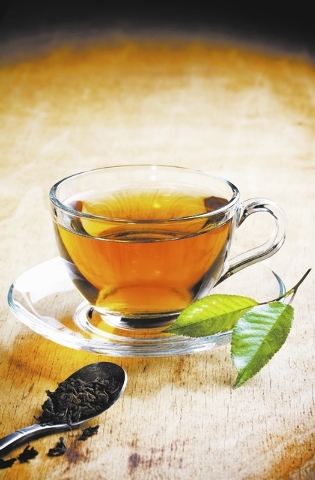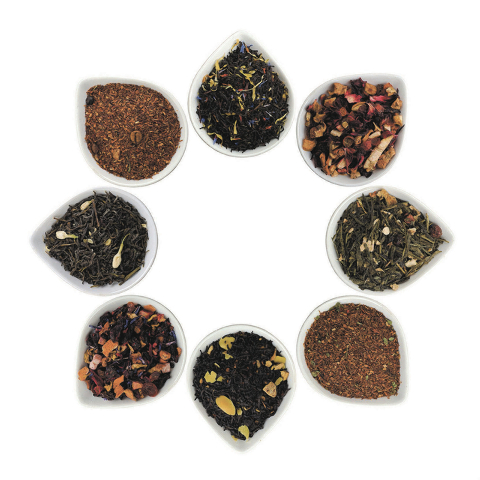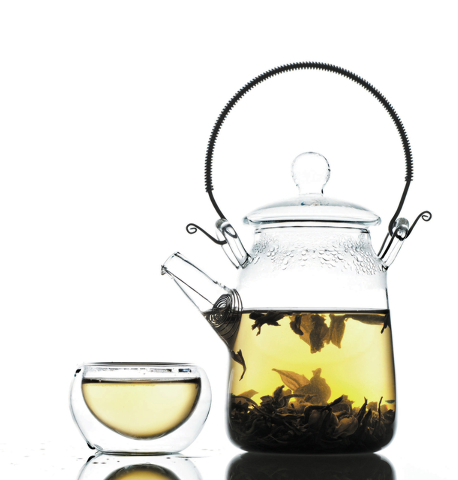Tea popularity grows as people seek its health benefits






When Cheryl and Richard Sheffield opened Sheffield Spice &Tea Co. in May in a shopping center off Eastern Avenue, they quickly realized the co-star in the business had been misjudged.
The first four sales that opening day were for their loose-leaf teas, and it only went up from there. By closing time, it was clear they’d need to rethink the spice-heavy inventory.
“We expected tea to be about 25 percent of our sales,” Richard Sheffield said. “But when we were running out of teas the first day that we opened and had to start ordering the second day, we knew that we underestimated the demand.”
Within three weeks they more than doubled their stock of teas to 90 varieties and now have about 120 — from smoky Lapsang souchong black tea to a silky milk oolong.
During the past few months, they have sold tea to everyone from well-traveled professionals who know their oolongs from their pu-erhs, to husbands converted by sipping fruity tea samples while their wives browsed the spice shelves. But a significant percentage of customers, they said, are interested not so much in the taste of the teas, but the touted health benefits.
Health benefits are a major reason U.S. tea consumption has grown steadily for the past two decades, the Tea Association of the USA says. The upward trend could mean a doubling of the annual wholesale value of the U.S. tea industry, now at about $10 billion, during the next several years.
Another factor boosting consumption is the growing availability of tea in a multitude of packages and varieties. Americans consume more than 79 billion 8-ounce servings of tea annually, usually in the form of iced black teas. But tastes are changing and it’s reflected in what’s being offered.
Drugstores and local gas-station markets, for example, are carrying ready-to-drink bottles of Lipton green and white teas with added flavors such as passion fruit or pomegranate. Big-box discount stores offer vanilla chai blends next to their instant coffee. And you can find tea-infused chocolates, smoothies, chewing gums and ice cream.
“The word that comes to mind is ubiquitous; tea is available everywhere and not just in one form,” Tea Association Executive Vice President Peter Goggi said. “Clearly, bottled teas will continue to expand. What is really exciting is the growth of specialty tea, those teas that are a little pricier because of the way they are manufactured or just their rarity. Also, I think we’ll see a lot more happening in the refrigerator section of your local store.”
All tea derives from an evergreen plant called Camellia sinensis, which is grown mostly in mountainous areas within countries such as China, Taiwan, India, Argentina and Kenya. What are known as herbal “teas” such as chamomile are not actual teas because they don’t come from the Camellia sinensis plant.
The four types of tea are black, oolong, green and white depending on how they are processed. Black and oolong teas, for example, go through an oxidation process that gives them a darker color and deeper flavor, while green and white teas are closest to the original fresh tea leaves, the Tea Association states.
There is little doubt that there are advantages to drinking tea. Compounds in tea called flavonoids act as antioxidants that help neutralize free radicals that can damage cells and contribute to chronic disease, according to research. There is also evidence that tea can help improve cardiovascular health by lowering blood pressure and LDL, or bad, cholesterol.
There is no shortage of research on tea’s effects; studies have examined tea’s ties to weight management, cognitive function and cancer. But time will tell how some of these studies hold up.
“I think there have been studies that support all of the health claims, so there is some credence to all of it,” said Libby Mills, a spokeswoman for the Academy of Nutrition and Dietetics and a registered dietitian. “However, some of the studies have been animal studies, some of them have been small, and some of them just need to be repeated.”
Drinking tea that is not oversweetened will always be better than downing calorie-dense, sugary sodas, and is an alternative for those who don’t want coffee’s higher caffeine levels, Mills said.
An 8-ounce cup of brewed coffee, for example, contains 95 to 200 milligrams of caffeine, while the same amount of black tea, which has the highest caffeine level of any of the four types of teas, contains 14 to 61 milligrams, the Mayo Clinic reports.
Not every tea is created equal, Mills added. Someone is likely to experience better flavor and reap more health benefits from a quality loose-leaf tea than the bagged teas found in supermarkets, which contain bits and pieces of tea left over from the processing of loose-leaf teas. These bagged teas have health benefits, but “they are kind of the watered-down and not-so-intensified version,” she said.
People watching their calories and sugar intake will also want to look closely at the nutritional labels for bottled teas and tea-based mixes, she added.
For devoted tea drinkers, however, there are other benefits beyond nutritional labels and hard science.
Naomi Rosen had her first cup of loose-leaf tea in 2005 during a visit to Chicago and “fell in love with it,” she said. The experience led her to start Joy’s Teaspoon, a locally based online tea business, five years later.
The business is named after Rosen’s mother, who died in 2003. She wasn’t a tea drinker but “a very social person” who always enjoyed having family and friends in the house to sit and chat, Rosen said.
“To me, tea is kind of the great unifier,” Rosen said. “Because it is so popular across the world, you can travel anywhere and have a huge language barrier, but I think you can always sit down and share a cup of tea with somebody.”
In August 2012, Rosen and Ashanti McGee, the owner of Iron Kettle Teas, another local online tea business, started a series of tea classes and tastings that are advertised on the social networking site meetup.com under Las Vegas/Henderson Tea Lovers. The classes have covered topics such as how to brew tea, the differences between the four types of teas and how and where teas are grown.
Rosen said she’s fascinated by tea’s many different types and blends and, that like wine, the leaves are affected by weather, soil and processing. It’s important, however, for novice tea drinkers not to be intimidated, she said.
“I kind of feel like any tea that you’ll drink on a daily basis that would substitute for the sodas or the crazy sugar-upped lattes, in my opinion, are the healthiest tea for you to drink,” she said.
Annie Meadows, who founded the Las Vegas Ladies Tea Society in 2006, drinks tea daily and hosts a traditional Victorian tea in her home about four times a year.
Meadows, a Henderson-based Christian singer who performs around America and in Europe, still has the little table she used as a child for impromptu tea parties under a tree in her front yard. Her daily tea breaks and tea-society gatherings have been like capturing a piece of her past, she said, slowing down to a child’s unhurried pace.
“It’s the return to something that we have lost in the 21st century, and that is how to relax and how to calm down and just stop,” she said. “Everybody is an overachiever now, the world has sped up. … Coffee makes you jittery, you know what I mean? I love coffee and there’s a lot of benefits to coffee, but it’s still the rush, rush, rush.”
Wendy Carrion, a 36-year-old mom and full-time college student, would agree that there is something special about a warm cup of tea.
On a recent Tuesday morning at Sheffield’s, she pulled a small elephant-shaped steeper from her purse along with pouches of tea, including a favorite dark tea with the flavor of Scotch caramel. She joked about converting her coffee-drinking friends to her favorite beverage and noted that her mother was an avid tea drinker.
“It’s kind of like a little blankie, that sense of warmth that you have (when drinking tea),” she said. “And I think a lot of it, too, is the nostalgia. You’re able to associate it with just moments throughout your life.”












